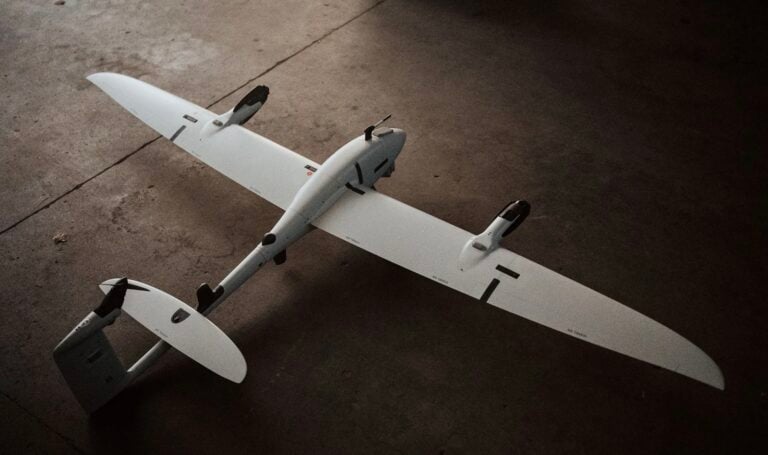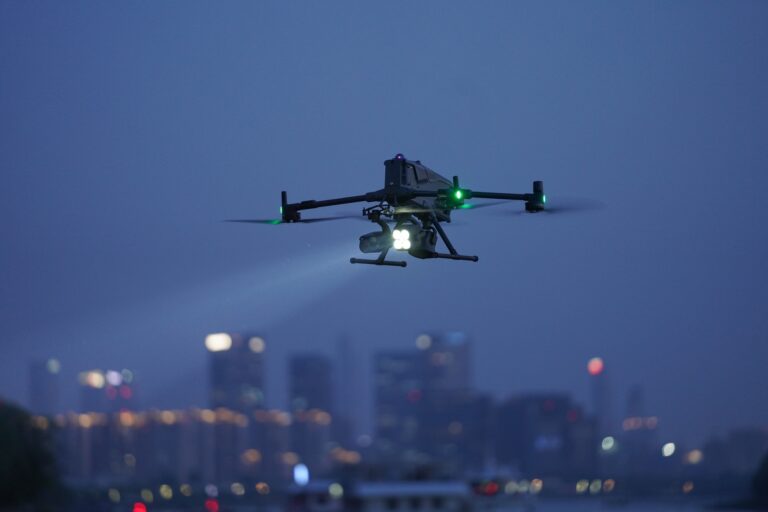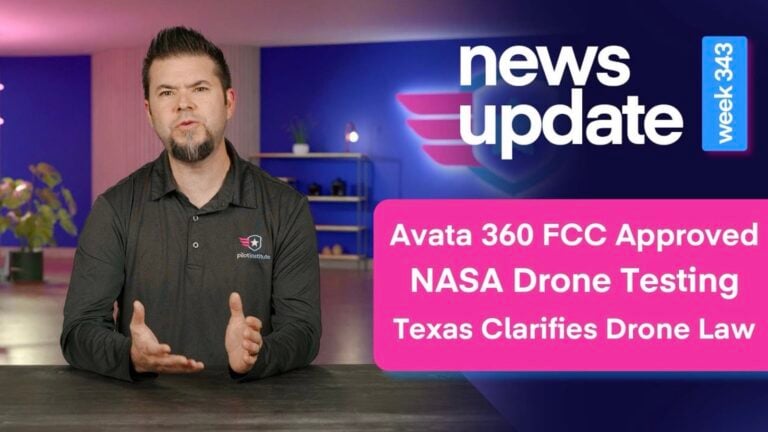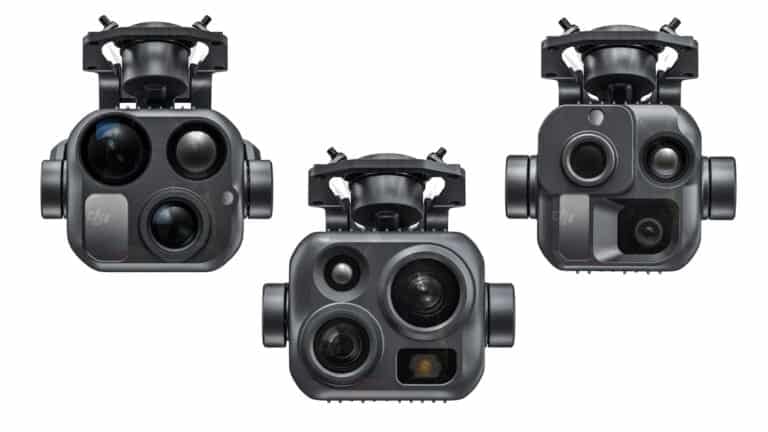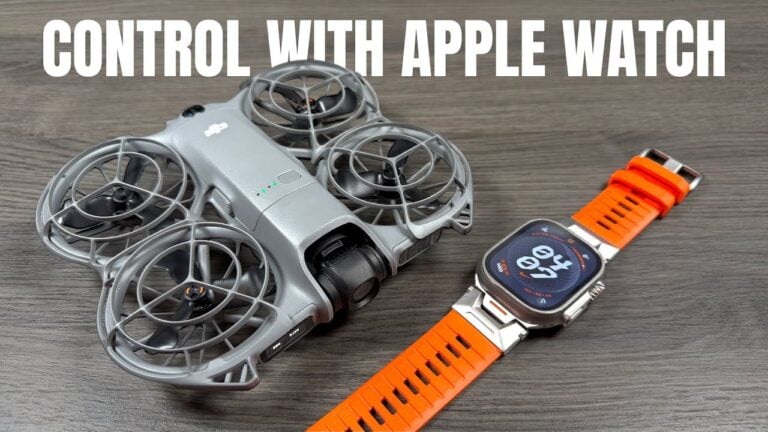1X’s $20,000 NEO Humanoid Robot Launches With A Catch: It Needs Humans To Do Your Chores
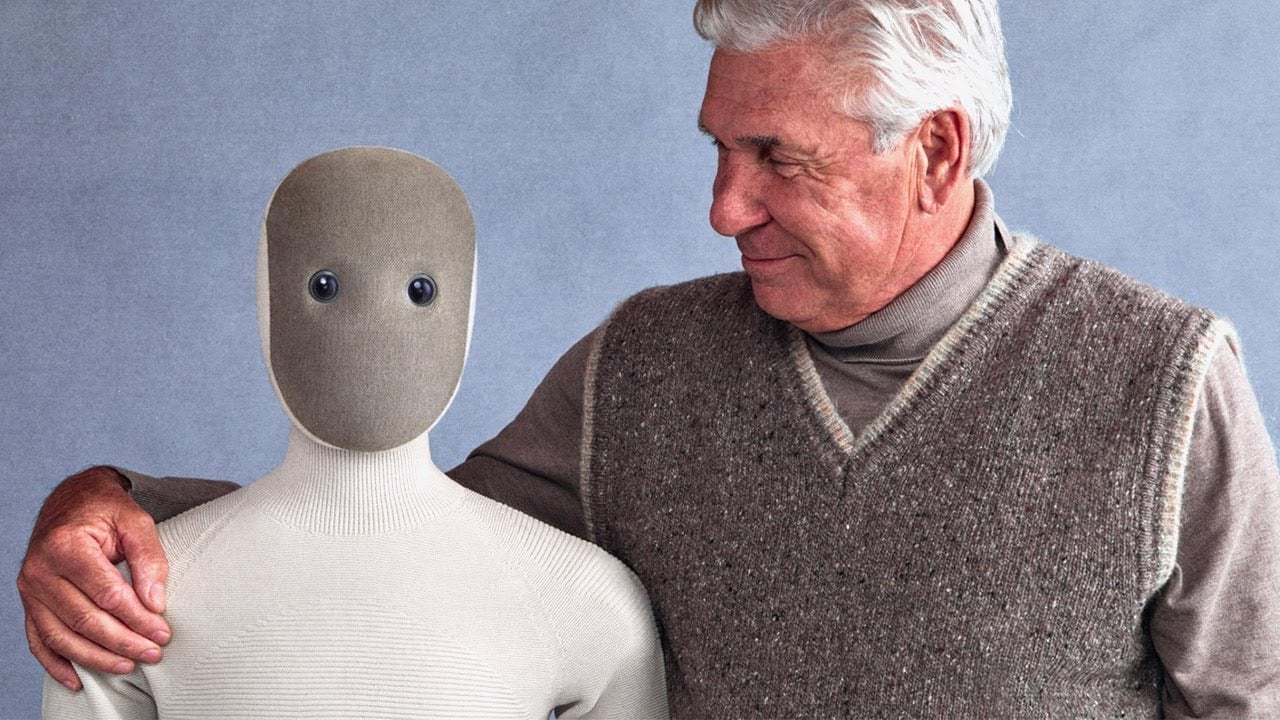
Amazon Drone Deals: DJI Mini 5 Pro Fly More Combo with DJI RC2 now for $1,099!
California-based 1X Technologies opened pre-orders this week for NEO, the first consumer-ready humanoid robot designed to handle household tasks—but Wall Street Journal testing revealed a surprising reality. The $20,000 robot that promises to fold your laundry and load your dishwasher can’t actually do any of that autonomously yet. Every task requires a remote human operator controlling the robot while watching inside your home through its cameras.
The launch comes just one day after DJI’s ROMO robot vacuum debuted in Europe using drone-derived sensor technology for fully autonomous operation at a fraction of the price, raising questions about whether consumers are ready to pay premium prices for humanoid robots that won’t work independently for years.
The $20K Reality Check: Remote Control Required
1X Technologies CEO Bernt Børnich was refreshingly candid with the Wall Street Journal’s Joanna Stern during her hands-on testing: anyone purchasing NEO for 2026 delivery must accept that human teleoperators will be controlling the robot while viewing the inside of their homes.
“If we don’t have your data, we can’t make the product better,” Børnich told Stern, explaining the company’s data collection strategy. The testing revealed NEO couldn’t perform a single task autonomously—every action required remote control by a human operator the company calls “Turing.”
The performance numbers weren’t encouraging. NEO took over one minute just to retrieve a water bottle from a refrigerator. Loading three glasses and dishes into a dishwasher consumed five minutes. Folding a single sweater required two minutes of careful manipulation. Multiple reports described the robot’s movements as slow and erratic, more reminiscent of a struggling prototype than a market-ready product.
According to Engadget, Børnich acknowledged that “much of the work will be done by teleoperators in the beginning,” with owners scheduling when operators can take control through a smartphone app. The company implements privacy measures including face blurring, designated no-go zones, and user-controlled access scheduling, but the fundamental trade-off remains: your robot helper requires someone watching your home to function.
NEO’s Technical Specifications and Capabilities
Despite current limitations, NEO represents genuine engineering achievement in humanoid robotics. The robot stands 5 feet 6 inches tall (167 cm) and weighs just 66 pounds (29.9 kg), yet can lift 154 pounds (69.8 kg) and carry objects up to 55 pounds (25 kg).
1X’s announcement emphasized the robot’s advanced hardware platform featuring the company’s patented Tendon Drive system—using the highest torque-density motors available to power tendon-based transmissions that create gentle, compliant movements safe around people. NEO achieves remarkably quiet operation at just 22 decibels, softer than a modern refrigerator.
The robot’s hands feature 22 degrees of freedom, enabling human-level dexterity for manipulating objects. A soft body made from custom 3D lattice polymer structures houses four microphones, three speakers, and two fisheye cameras for environmental awareness. Built-in WiFi, Bluetooth, and 5G connectivity enable remote operation and over-the-air software updates.
NEO runs on 1X’s proprietary Redwood AI model—a 160-million-parameter transformer combining vision, touch, and body movement data trained on real-world teleoperation. The system includes a built-in large language model for natural conversation, with memory capabilities allowing it to retain context across interactions.
Pricing, Availability, and Market Positioning
NEO launches at $20,000 for outright purchase or $499 monthly on a six-month minimum subscription, both requiring a $200 refundable deposit. According to multiple sources, 1X targets delivery in 2026, positioning NEO as the world’s first consumer-ready humanoid for home use.
The pricing places NEO significantly above existing home automation solutions. For context, premium robot vacuums like the Roborock S8 MaxV retail around $1,400, while DJI’s just-launched ROMO vacuum costs €1,299 to €1,899 ($1,378 to $2,014 USD) and operates autonomously today using drone-derived sensing technology.
1X secured substantial backing for NEO’s development, including a $23.5 million Series A2 round led by OpenAI in 2023 and a $100 million Series B in 2024. The company also maintains a strategic alliance with Nvidia, whose CEO Jensen Huang accepted a custom leather jacket from NEO during an onstage appearance in March 2024.
The Competitive Humanoid Robot Landscape
NEO enters a rapidly expanding but still immature market for humanoid robots. Figure AI deploys its Figure 02 and Figure 03 robots at BMW manufacturing facilities and an unnamed logistics company, with home testing planned for later in 2025. Tesla continues developing its Optimus humanoid, though the program recently lost vice president Milan Kovak to family commitments.
Other competitors include Agility Robotics with its Digit platform, Apptronik’s Apollo, and Chinese manufacturer Unitree’s various humanoid models. Most focus on industrial and commercial applications rather than direct consumer sales.
Morgan Stanley projects the humanoid and service robot markets could exceed $300 billion to $400 billion within a decade, driven by labor shortages and advancing AI capabilities. However, the firm estimates only 80 million humanoid robots will operate in homes by 2050—a small fraction compared to industrial deployment.
Investment in humanoid robotics startups has exceeded $1 trillion yen (approximately $6.7 billion USD) across more than 50 companies, with over $1.5 billion deployed in 2024 alone, according to Gigazine.
DroneXL’s Take
The timing of NEO’s launch creates a fascinating glimpse into two parallel paths in robotics evolution. Yesterday, we covered DJI’s ROMO vacuum entering Europe with drone-derived sensing technology delivering autonomous operation today for single-purpose cleaning. NEO represents something far more ambitious—the first real attempt to bring general-purpose humanoid robotics into homes, and yes, it needs human training data to get there. That’s not a bug, it’s the actual path forward.
Here’s what’s genuinely exciting: 1X is being radically transparent about the development process in a way most robotics companies never dare. While competitors show carefully edited demos of robots performing cherry-picked tasks, 1X openly admits NEO requires teleoperators and explains exactly why—because that’s how you build AI systems that work in the real world’s infinite complexity. The Wall Street Journal testing wasn’t a failure, it was an honest look at Day One of a multi-year journey.
We’ve covered the evolution of autonomous systems extensively, from Ukrainian drone swarms using human-in-loop AI targeting to Zipline’s hybrid delivery drones that blend autonomous flight with human oversight. The pattern is consistent: the most successful autonomous systems start with human guidance and gradually shift capability to AI as training data accumulates. NEO is following exactly this proven development model.
The Tesla comparison is instructive. Early Autopilot required constant supervision and handled only highway driving. Critics dismissed it as overhyped vaporware. But each Tesla on the road collected data, the neural networks improved, and today’s systems handle complex urban environments that seemed impossible a decade ago. NEO is starting further behind because home environments are exponentially more complex than roads—infinite object variations, unpredictable layouts, tasks requiring fine manipulation that autonomous vehicles never attempt.
But the learning curve won’t be linear—it’ll be exponential. The first NEO might take five minutes to load a dishwasher with human help. The hundredth NEO will learn from all previous attempts. The thousandth will have seen more dishwasher configurations than any human. By the ten-thousandth unit, the neural networks will have accumulated training data that makes autonomous operation genuinely practical. That’s not speculation—it’s exactly how AI racing drones went from crashing constantly to beating human champions, with researchers specifically noting applicability to household robotics.
The technical foundation is genuinely impressive. 1X’s Tendon Drive system, 22 DOF hands, and Redwood AI model represent breakthrough engineering in humanoid robotics. A 66-pound robot lifting 154 pounds demonstrates power-to-weight ratios that seemed impossible five years ago. The soft, compliant design prioritizes safety in ways rigid industrial robots never achieve. These aren’t incremental improvements—they’re fundamental advances that make home deployment actually possible.
Yes, DJI’s ROMO works autonomously today because vacuuming is a solved problem—navigate space, avoid obstacles, apply suction. That’s valuable, but it’s fundamentally limited. NEO is attempting something categorically harder: general-purpose manipulation in unstructured environments. The difference between a robot vacuum and a humanoid helper isn’t the difference between a tricycle and a bicycle—it’s the difference between a calculator and artificial general intelligence.
The privacy concerns deserve serious consideration, but 1X’s approach of scheduled access, no-go zones, and face blurring shows thoughtful implementation. More importantly, the data collection phase is temporary—a necessary step toward autonomous operation, not a permanent feature. Early adopters aren’t paying $20,000 for a puppet; they’re funding the training data that makes future autonomy possible while getting a functional (if limited) helper today.
For drone professionals who’ve watched autonomous technology mature from basic waypoint navigation to complex BVLOS operations, NEO’s current state looks familiar—it’s exactly where drone autonomy was fifteen years ago. The difference is that humanoid robotics faces problems an order of magnitude harder than aerial navigation. Corvus warehouse drones work autonomously in controlled environments. Home environments aren’t controlled—they’re chaos, which is why they require this intensive training approach.
The real question isn’t whether NEO will eventually work autonomously—the technology trajectory makes that virtually certain. The question is whether early adopters value being part of that journey. Some will wait for Generation 2 when autonomous operation is proven. Others recognize that transformative technology always requires pioneers willing to participate in development. Tesla didn’t become Tesla without early Model S owners beta-testing Autopilot. SpaceX didn’t become SpaceX without early Starlink customers tolerating spotty coverage.
History suggests the skeptics who dismissed early autonomous vehicles as overhyped toys were wrong about the trajectory, even if they were right about the timeline. NEO might take five years to achieve reliable autonomous operation, or it might take three. But the path from here to there isn’t mysterious—it’s data accumulation and neural network training, processes we now understand very well.
The fact that 1X is hiring robot operators isn’t a damning revelation—it’s a job creation story. These positions represent the human expertise that trains AI systems, similar to how drone pilot positions evolved from manual flight to fleet supervision as autonomy matured. The work is temporary but essential, and the skills developed will define the robotics industry for decades.
We’re watching the birth of an entirely new category of consumer robotics. Yes, it’s expensive. Yes, it requires patience. Yes, early adopters are essentially funding R&D while getting a first-generation product. But that’s how every transformative technology works. The iPhone wasn’t perfect in 2007, but the people who bought it anyway made the smartphone revolution possible.
For those willing to see past the current limitations, NEO represents something remarkable: a genuine attempt to solve one of robotics’ hardest problems with transparent development, solid engineering fundamentals, and a realistic path to autonomous capability. The future where humanoid robots handle household tasks isn’t arriving in 2026—but 2026 is when we start building that future.
What do you think? Are you excited about the potential for humanoid robots to eventually transform daily life, even if it takes years of development? Would you become an early adopter to help train the AI systems that make future autonomy possible? Share your thoughts in the comments below.
Discover more from DroneXL.co
Subscribe to get the latest posts sent to your email.
Check out our Classic Line of T-Shirts, Polos, Hoodies and more in our new store today!

MAKE YOUR VOICE HEARD
Proposed legislation threatens your ability to use drones for fun, work, and safety. The Drone Advocacy Alliance is fighting to ensure your voice is heard in these critical policy discussions.Join us and tell your elected officials to protect your right to fly.
Get your Part 107 Certificate
Pass the Part 107 test and take to the skies with the Pilot Institute. We have helped thousands of people become airplane and commercial drone pilots. Our courses are designed by industry experts to help you pass FAA tests and achieve your dreams.

Copyright © DroneXL.co 2025. All rights reserved. The content, images, and intellectual property on this website are protected by copyright law. Reproduction or distribution of any material without prior written permission from DroneXL.co is strictly prohibited. For permissions and inquiries, please contact us first. DroneXL.co is a proud partner of the Drone Advocacy Alliance. Be sure to check out DroneXL's sister site, EVXL.co, for all the latest news on electric vehicles.
FTC: DroneXL.co is an Amazon Associate and uses affiliate links that can generate income from qualifying purchases. We do not sell, share, rent out, or spam your email.






